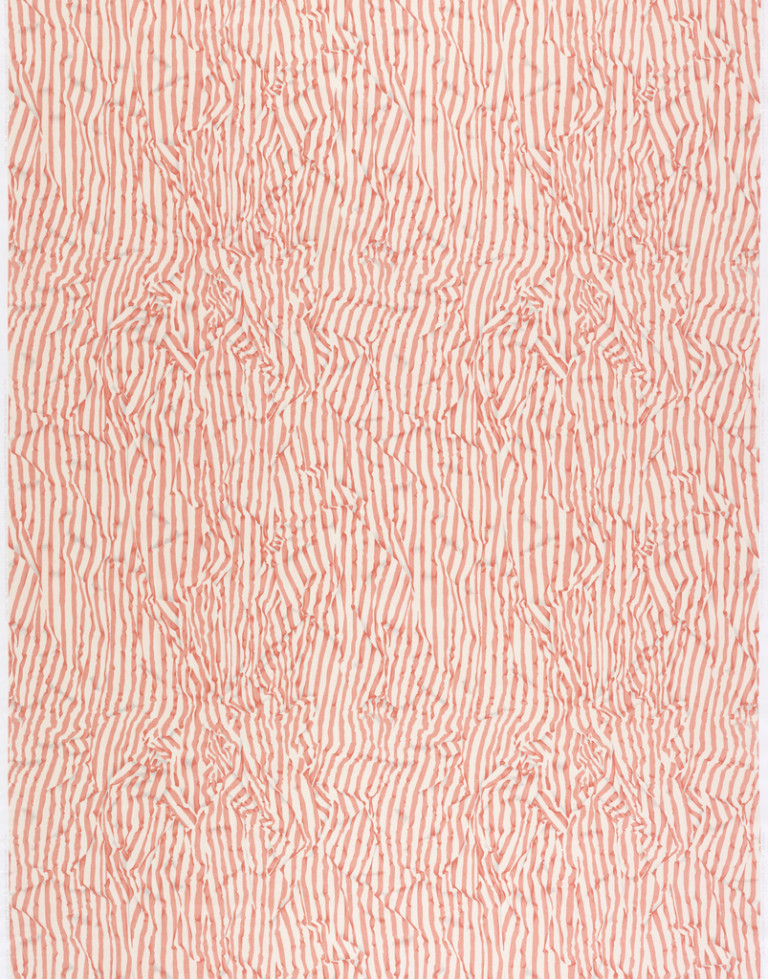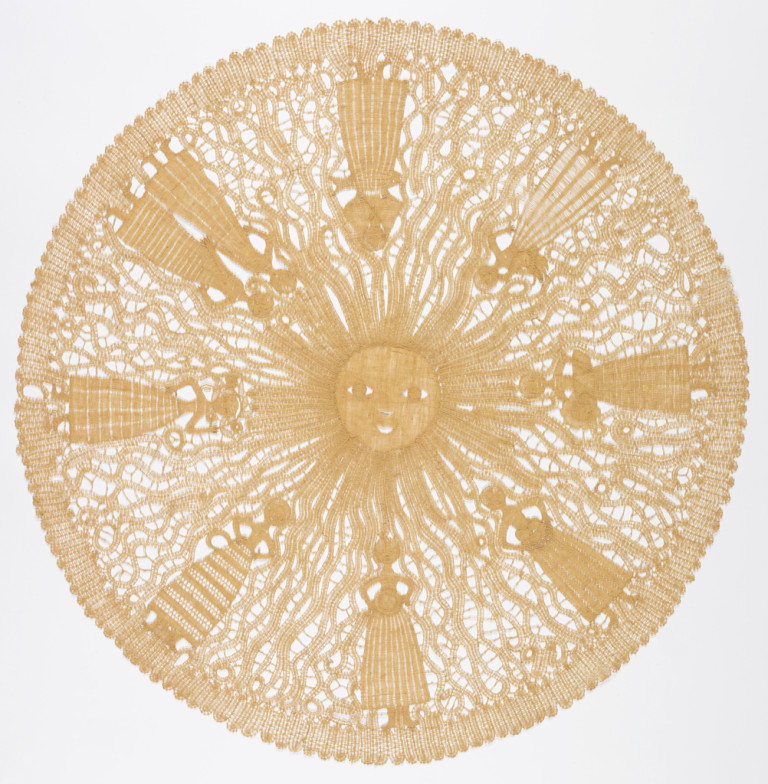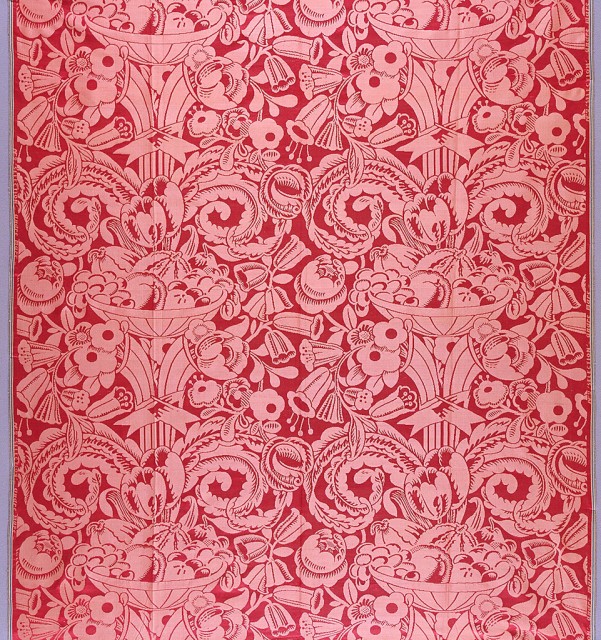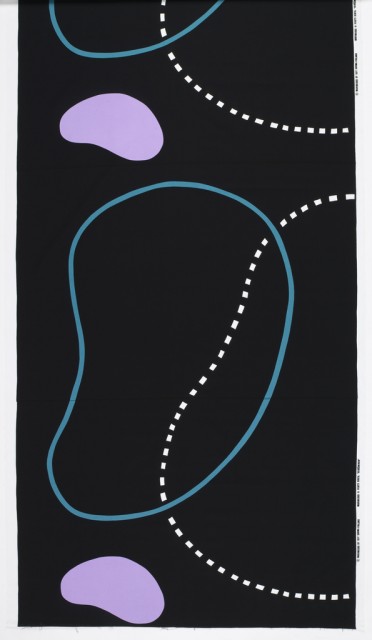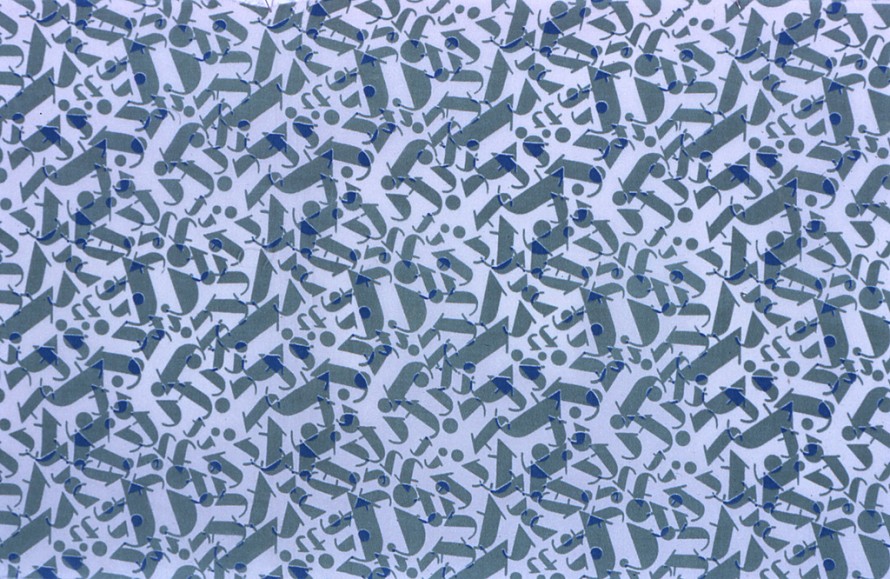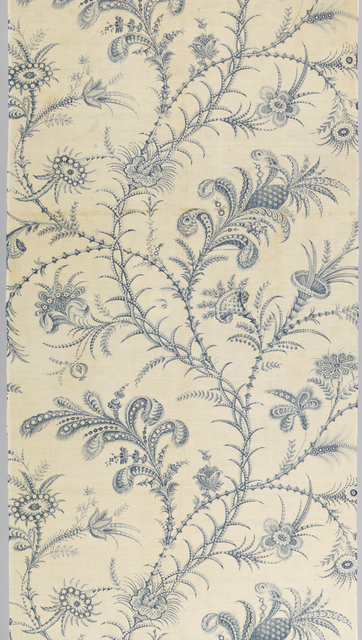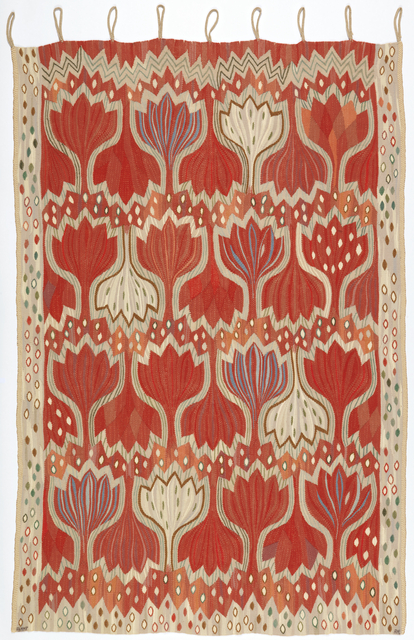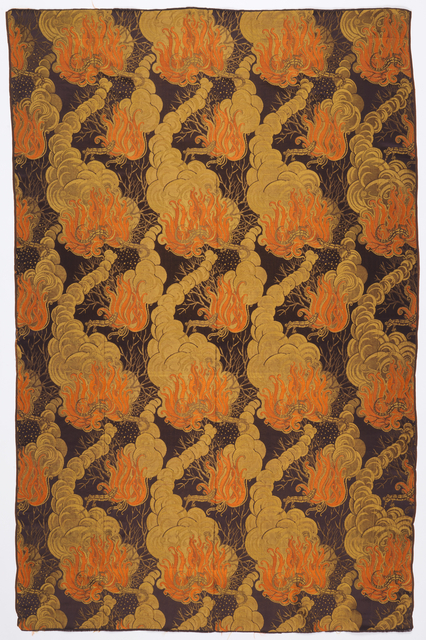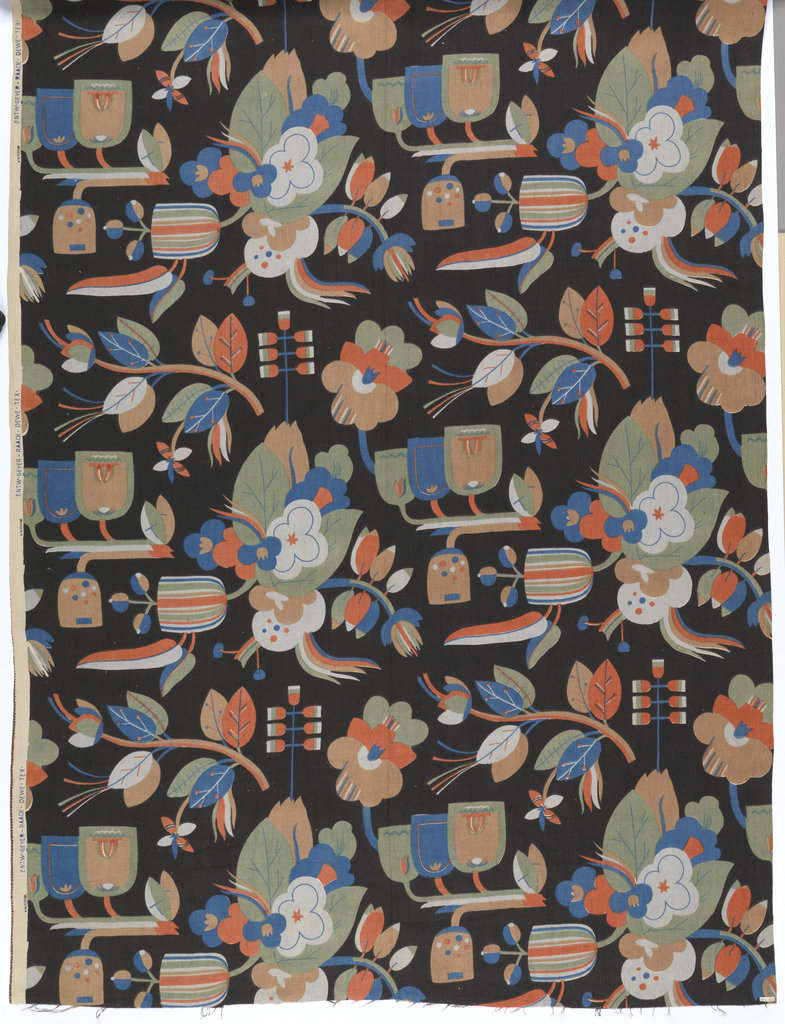Literally translated as “deceives the eye,” the French term trompe l’oeil refers to a technique that has been employed by artists for centuries and usually uses a two-dimensional plane to suggest a fictional three-dimensional space. For instance, the traditional use of tromp l’oeil in this plan for the ceiling of a chapel creates the illusion...
Lace-making was a tradition in Luba Krejci’s native Czechoslovakia, but enthusiasm for the craft waned in the twentieth century. Krejci sought to reverse that trend by creating fresh lace designs like this one for others to produce. She intended to revitalize the disappearing art form by inspiring new interest in it. The serpentine lines between...
In design history as in art history, works are often organized into distinct chronological styles or movements. Such a rigid framework tends to neglect a certain natural fluidity inherent in the evolution of style. For example, 1920s French designs cannot always be simply defined by such broad strokes as Art Deco, Moderne, or Cubism. Many...
Marimekko’s fashion and textile designs from the 1970s captured the free spirit and funky aesthetic of the decade with bold yet simple organic forms. The Finnish company’s approach to design also reflected interest in a youth culture which questioned conformity and authority. Marimekko famously blurred the lines of gendered fashion systems. The company also challenged...
Part of an iconic collection of designs known as the Americana Prints, It, with its typographic subject and nod to cubism, represents a conscious shift away from traditional French silk design. French manufacturers had long dominated the silk industry, while American silk producers got by hiring artisans to merely copy French designs. Americana Prints intended...
England enjoyed imported indigo dye from India in the 17th century. It wasn’t until the mid 18th century, however, that two important innovations made delicate designs like this Bromley Hall textile possible. Indigo dye is unique in that it is not water-soluble, so it must be chemically reduced to properly saturate fibers. The dye must be...
Uniformity with moments of variety delight the senses in this mid-century wall hanging. Using natural fibers and the ancient technique of tapestry weaving, Swedish designer Ann-Mari Forsberg created this wall hanging, Red Crocus, in which flattened silhouettes of the flower dance across the visual field. This object was part of an important collection that was...
This rhythmic pattern of meandering flames and smoke is one in a series of four woven fabrics, which together represent the four basic elements of nature: earth, water, air and the one depicted here, fire. The Four Elements were a popular theme throughout the history of decorative arts, as seen in this drawing from about 1815....
A limited yet dynamic color palette breathes life into the flat color motifs of this screen-printed woven linen textile by Ruth Hildegard Geyer-Raack. The pattern was possibly designed from her own studio (which she opened in 1924) but was produced in 1928 by Deutsche Werkstätten Textilgesselschaft mbH, also known as DEWE-TEX, which was founded in...
